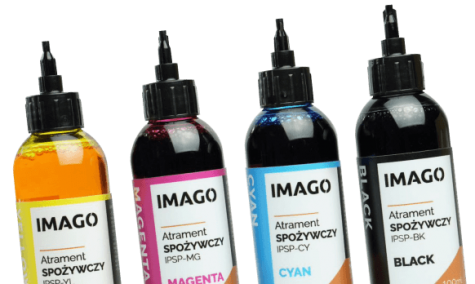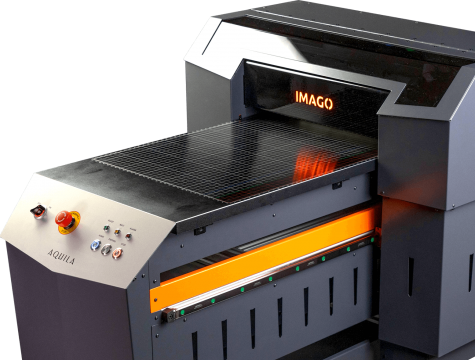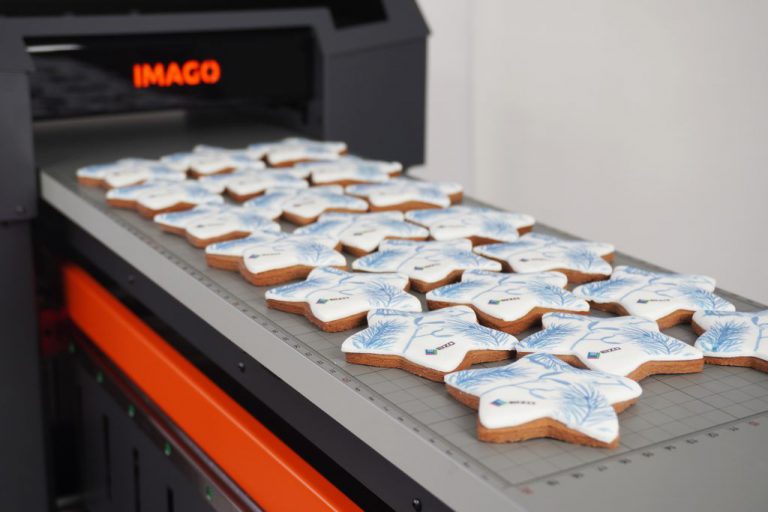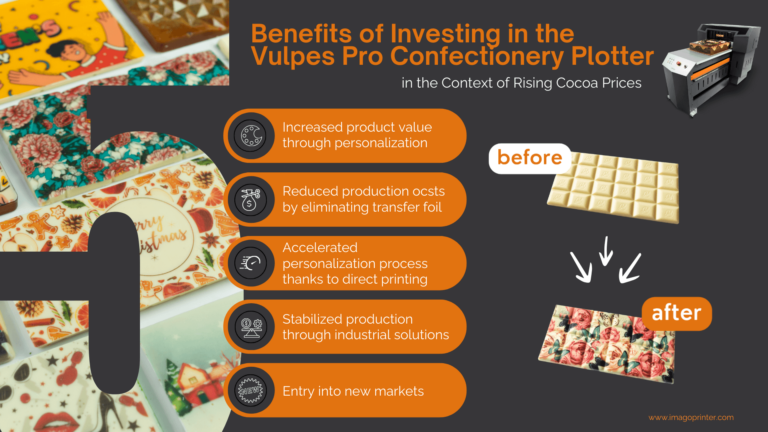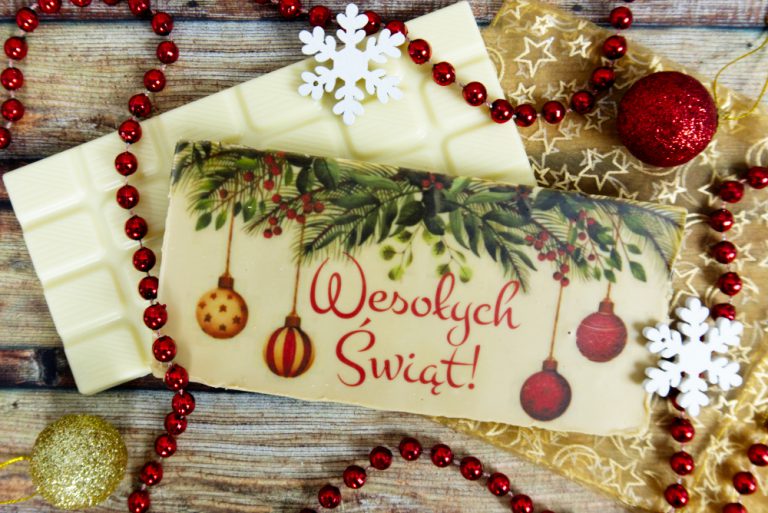How to Choose a Cookie Printer?
Cookie printers have revolutionized the confectionery industry, allowing the creation of unique designs and personalization of products on a large scale. With these devices, bakeries and pastry shops can offer customers unique products tailored to individual needs and occasions. In this article, we will take a look at the different types of cookie printers, their application options and the key factors to look out for when choosing the best device for your business.
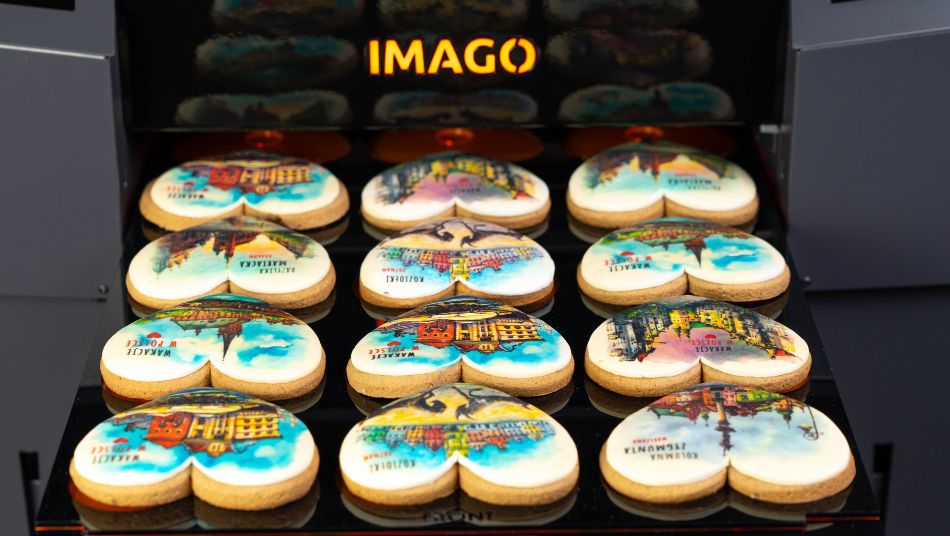
What is a cookie printer and how does it work?
A cookie printer is a specialized device that allows you to apply colorful designs to the surface of cookies, gingerbread and other baked goods. Thanks to the use of edible inks, the printed designs are fully safe for consumers. These printers allow the creation of high-quality prints that can include detailed designs, logos or text, so confectioners have almost unlimited possibilities to personalize their products.
Printer usually consists of several key components:
- Printing system – is responsible for the precise reproduction of graphics on the product, using food-grade inks. This system is adapted to the delicate surfaces of baked goods, so as not to damage the cookies during printing.
- Food grade inks – special inks designed for food applications, certified for food contact. These inks come in a variety of colors and can be used to create multicolored graphics that are not only aesthetically pleasing, but also durable.
- Working surface (substrate) – the place on which cookies or other baked goods intended for printing are placed. Depending on the model of the printer, it can be a flat or rotary substrate, which affects the type of cookies that can be printed and the production capacity.
- User interface – a control panel that allows you to select a pattern, configure settings and control the process. Thanks to the intuitive software, users can quickly adjust printing parameters and choose the best settings for the selected pattern.
Types of cookie printers
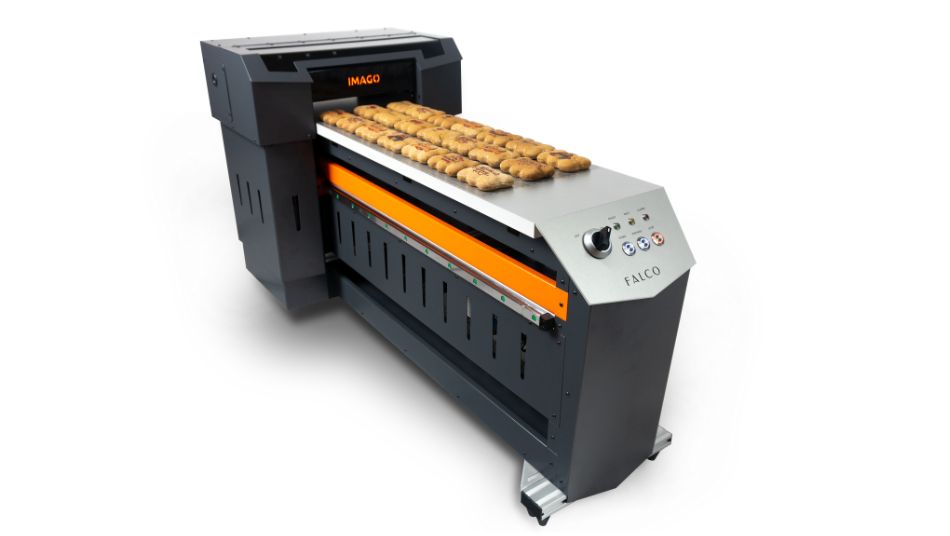
There are different types of confectionery printers on the market, each with its own unique applications. Choosing the right device depends on your production needs and the type of decoration you plan to achieve.
- Flatbed printers
This is the most popular type of printer used in bakeries and confectioneries, ideal for mass production of regular-shaped cookies. These printers have a flat working surface on which the cookies are laid out, and then the design is applied using food inks. These types of printers are efficient and fast, making them ideal for producing large batches of cookies with a uniform look and pattern. - Rotary printers
Rotary printers, unlike flatbed models, are smaller and slower, making them best suited for small scale production. They typically handle up to 12 cookies at a time, making them popular for small confectionery studios or for small, personalized orders. Thanks to their rotary work surface, these printers can apply designs to more irregularly shaped cookies, but their limited capacity makes them used mainly for small productions.
What to look for when choosing a cookie printer?
When buying a cookie printer, it is worth paying attention to several key aspects that will affect the efficiency of production and the quality of printing.
- Ink type
Food inks used in confectionery printers should be certified as safe. It is advisable to choose inks with high resistance to external factors, such as moisture and light, so that the print remains durable and aesthetically pleasing. - Performance and speed
Printers vary in printing speed, which is important especially for mass production. Higher-capacity models are ideal for large bakeries and pastry shops that produce hundreds of cookies a day. For small studios, semi-automatic models with lower speeds that still offer high print quality may suffice. - Printing precision and resolution
High print resolution is crucial when creating detailed designs and graphics, especially for special occasion cakes that require high accuracy. It’s worth choosing a printer that allows precise reproduction of details – from small ornaments to intricate graphics.
Example applications of cookie printers
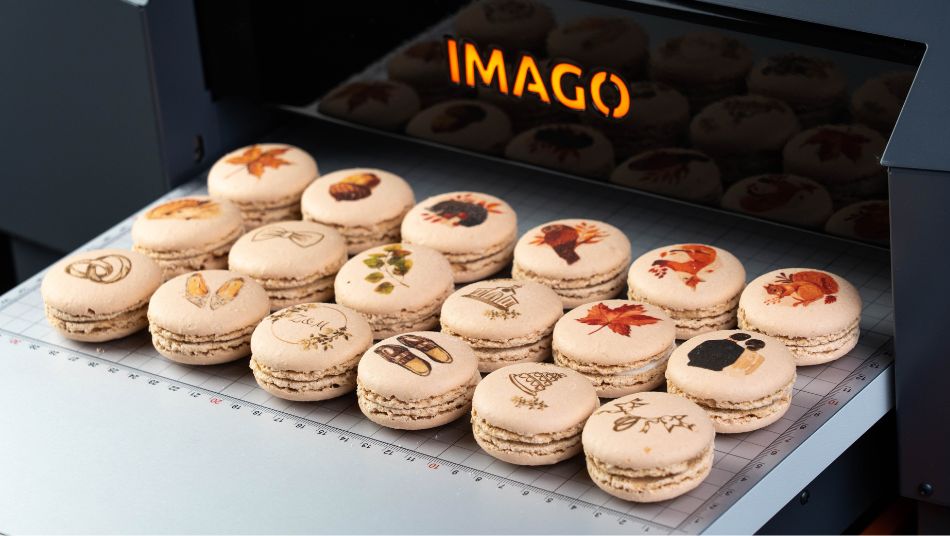
Cookie printers offer a wide range of creative possibilities and can be used in various confectionery segments.
- Custom printing for events
Printers are indispensable when preparing cookies for special occasions such as weddings, birthdays or holidays. Personalized prints allow you to add names, dates, logos, or other designs that will make your baked goods special. - Mass customization in confectioneries and bakeries
With cookie printers, you can mass-produce products with uniform designs, which will work well for preparing seasonal assortments or marketing campaigns. The ability to quickly personalize is also a way to stand out from the competition. - Confectionery printers not just for cookies
Advanced food printers can be used for many other baked goods. Printing on cakes, monoporations or macarons are just some of the possibilities.
Summary
Choosing the right cookie printer depends on many factors, such as the type of production, personalization needs and budget. With the possibilities offered by modern confectionery printers, you can increase the potential of your business and attract customers with unique products. If you would like to learn more about the cookie printers available from IMAGO or need help choosing the right model, contact our team or visit our product page!
